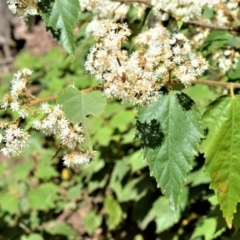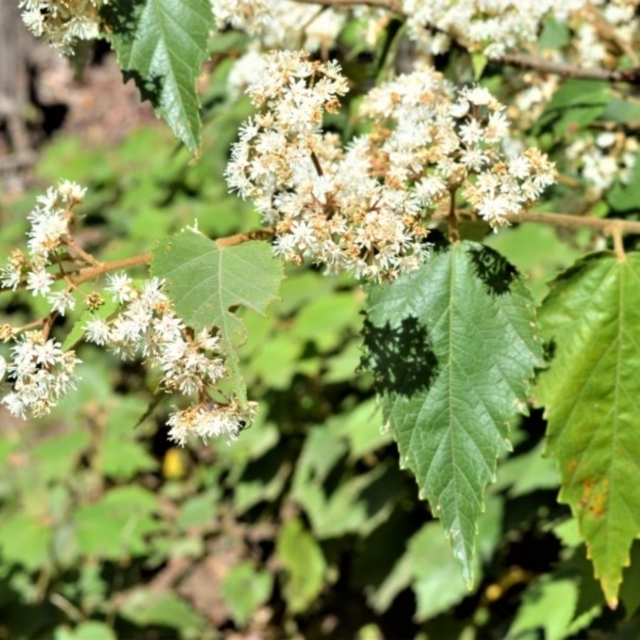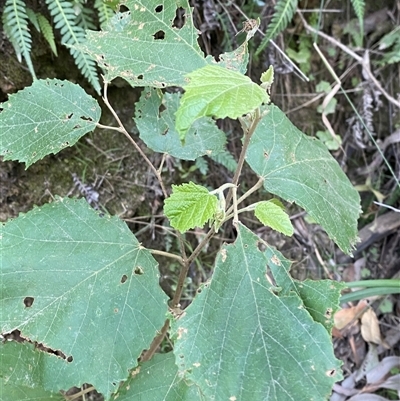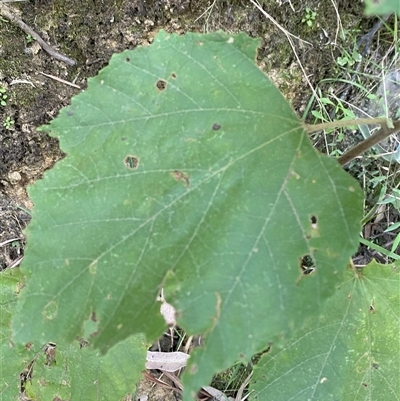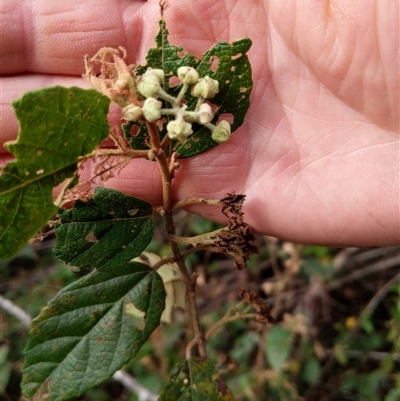Androcalva fraseri (Brush Kurrajong)
From the scholarly published botanical revision,
the distinguishing features' wording,
to check for with magnification (a hand lens in the field or a binocular microscope back inside),
here :
Wilkins, C. F. and B. A. Whitlock (2011)
A new Australian genus, *Androcalva*, separated from *Commersonia* (Malvaceae s.l. or Byttneriaceae).
Australian Systematic Botany 24 (5) : 284–349.
—botanical key quotation:
"
37 Stem and flowering stems with white, stellate hairs, or white with tan centres, ~0.5 mm long
– *Androcalva fraseri* (SE Qld; North Coast of NSW)
37 Stem and flowering stems with long golden to ferruginous stellate hairs, ~1 mm long
– *Androcalva rossii* (S NSW; Vic: E Gippsland)
" .
For more than 15 years, I, Jason Stewart, have talked with so many people including great field botanists,
confused by these two species' distinguishing features. I'm not better. I carefully check the plants' stems everytime.
For clarifying and resolving this confusion, going back to the most recent scholarly evidences–based source for the distinguishing features,
has the utmost importance (as i have reproduced above) .
• *Androcalva fraseri* : stems and flowering stems have many white stellate individual hairs (shorter: at 1⁄2 mm average)
(rather than referring to a leaves' undersides' overview of a white appearance or a rusty appearance, which they may have from many other types of hairs there, as that does not have relevance to the distinguishing features between these two species.).
• *Androcalva rossii* : stems and flowering stems have many long golden to ferruginous stellate hairs (longer: at 1 mm average)
(leaves' undersides' overview often has a white appearance or a golden appearance or even a rusty coloured appearance from many other types of hairs there, yet that does not have relevance to the distinguishing features between these two species. ) .
Androcalva fraseri is listed in the following regions:
South Coast | Hunter Region | New South Wales North Coast
Species information
- Androcalva fraseri Scientific name
- Brush Kurrajong Common name
- Not Sensitive
- Local native
- Non-invasive or negligible
- Up to 309.94m Recorded at altitude
- Machine learning
-
In flower
-
Synonyms
Commersonia fraseri
Location information
-
Maps
Broulee Moruya Nature Observation Area Buckenbowra State Forest Budawang National Park Bugong National Park Bundanon Trust Bundewallah Walking Track CA0190 Clyde State Forest Currowan State Forest Genoplesium plumosum target area Jerrawangala National Park Kangaroo Valley - Friends of the Brush Tailed Rock Wallaby McDonald State Forest Mogo State Forest Monga National Park Morton National Park Morton State Conservation Area Murramarang National Park Shallow Crossing State Forest South Brooman State Forest VC00225 Wandera State Forest Wandera State Forest WR00207 Yadboro State Forest Yerriyong State Forest -
Places
Bundewallah, NSW Little Forest, NSW







